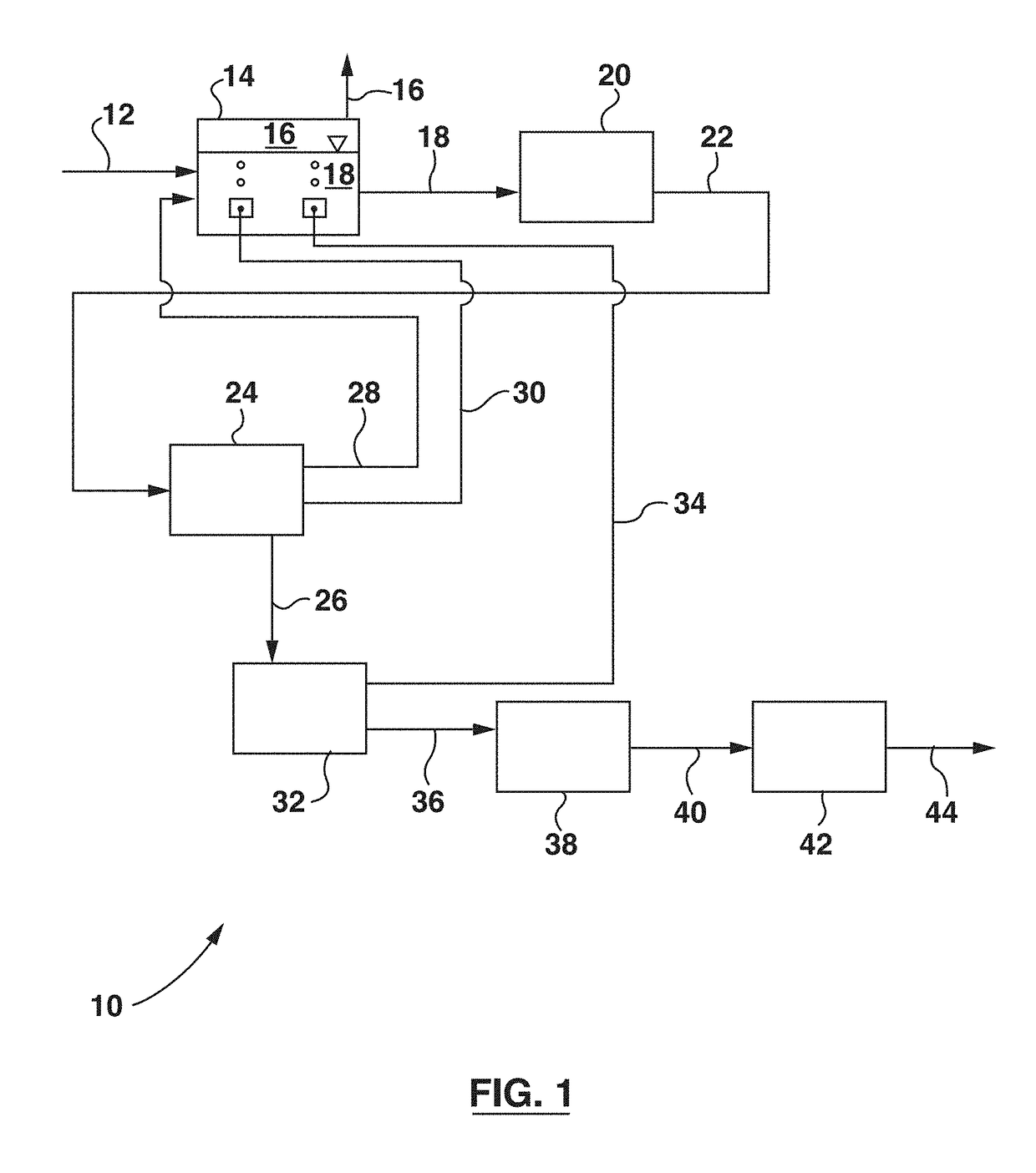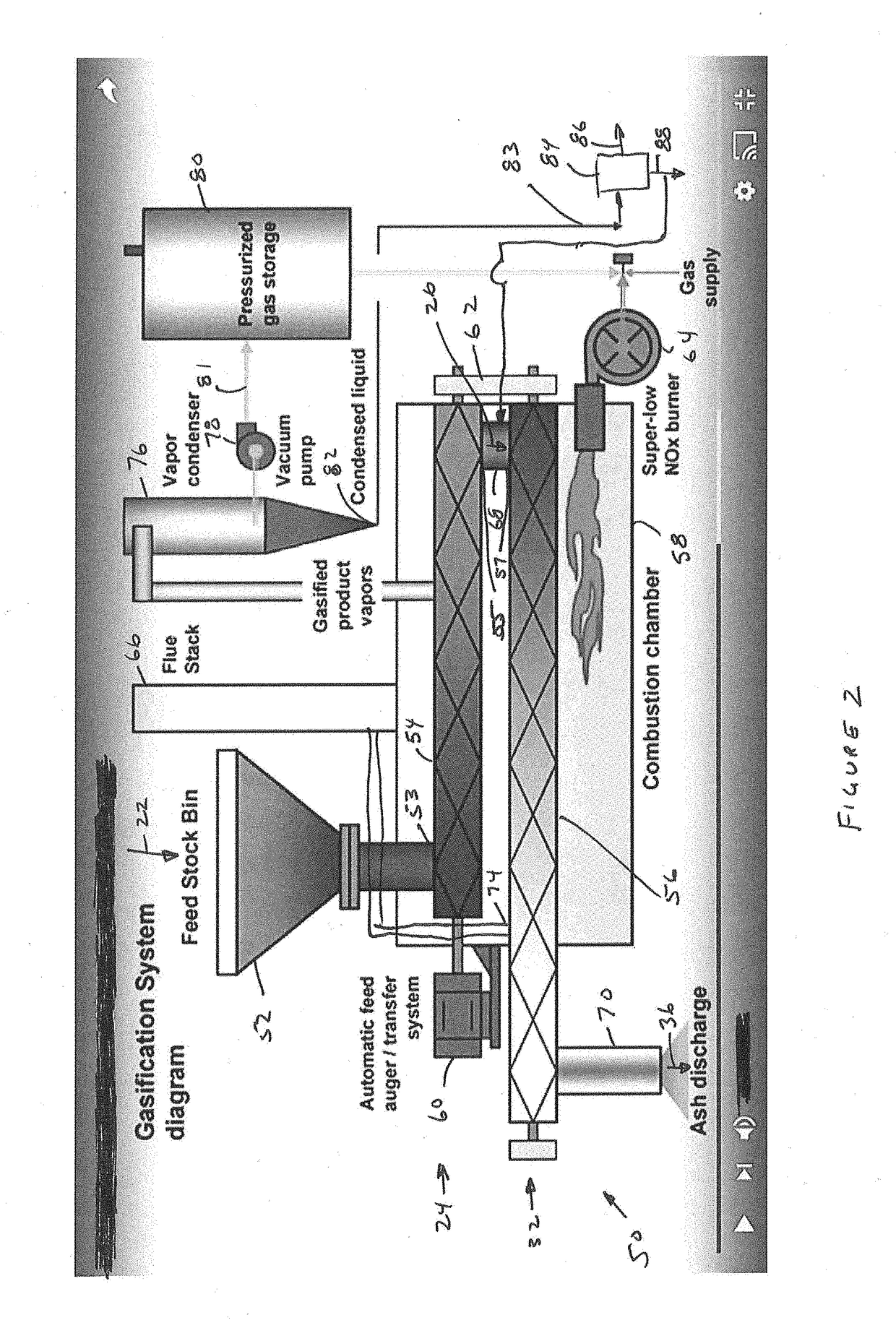Two stage pyrolysis of organic waste
a technology of organic waste and pyrolysis oil, which is applied in the direction of biological sludge treatment, combustion types, lighting and heating apparatuses, etc., can solve the problems of frequent toxic or at least inhibiting pyrolysis oil, and produce oily char that is not very porous
- Summary
- Abstract
- Description
- Claims
- Application Information
AI Technical Summary
Benefits of technology
Problems solved by technology
Method used
Image
Examples
Embodiment Construction
[0011]FIG. 1 shows a system 10 for treating organic waste 12. Optionally, the organic waste 12 may be pre-treated. For example, the organic waste 12 may have been separated from other waste, for example in a press or by a screen. Additionally or alternatively, solid particles of waste 12 may be homogenized or reduced in size.
[0012]The waste 12 is sent to an anaerobic digester 14, alternatively referred to as a digester for brevity. The digester 14 may have one or more mixed covered tanks. Examples of suitable digesters are sold under the Triton and Helios trade marks by UTS Biogas or Anaergia. The digester 14 produces product biogas 16 which may, for example, be used to produce energy in a combined heat and power unit or upgraded to produce biomethane. The inside of the digester contains sludge 18. A stream of sludge 18, alternatively called digestate, is also withdrawn from a digester outlet of the digester 14.
[0013]Sludge 18 is sent to a drying unit 20. In the drying unit 20, the ...
PUM
 Login to View More
Login to View More Abstract
Description
Claims
Application Information
 Login to View More
Login to View More - R&D
- Intellectual Property
- Life Sciences
- Materials
- Tech Scout
- Unparalleled Data Quality
- Higher Quality Content
- 60% Fewer Hallucinations
Browse by: Latest US Patents, China's latest patents, Technical Efficacy Thesaurus, Application Domain, Technology Topic, Popular Technical Reports.
© 2025 PatSnap. All rights reserved.Legal|Privacy policy|Modern Slavery Act Transparency Statement|Sitemap|About US| Contact US: help@patsnap.com


